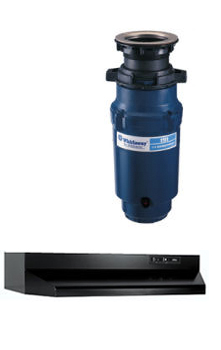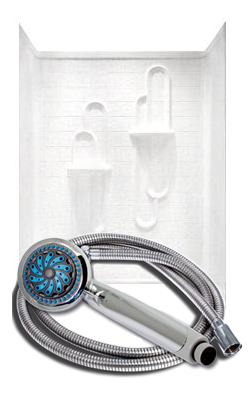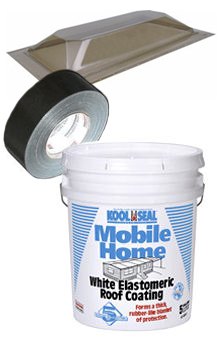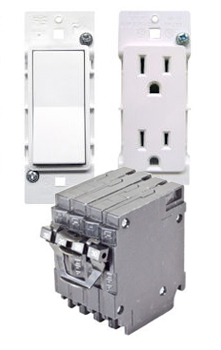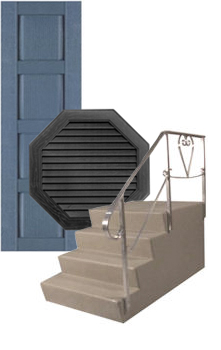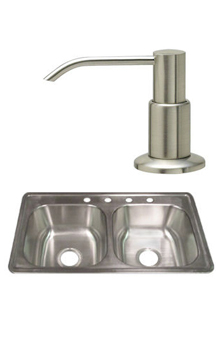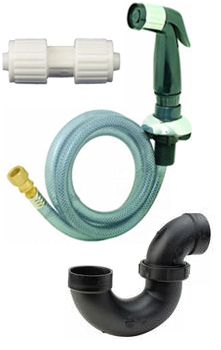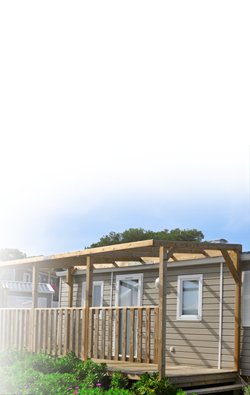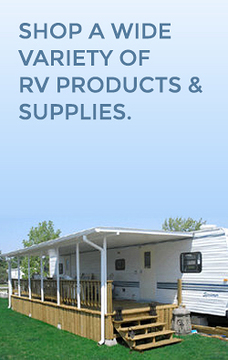 Plumbing in mobile homes is a bit different from site-built homes in construction, location, and common plumbing issues. In addition, mobile homes only meet the national HUD code, not the local or residential codes. The national HUD codes are not as stringent, making for a frustrating plumbing experience for both you and your local plumber if you are not familiar with the pieces and parts.
Plumbing in mobile homes is a bit different from site-built homes in construction, location, and common plumbing issues. In addition, mobile homes only meet the national HUD code, not the local or residential codes. The national HUD codes are not as stringent, making for a frustrating plumbing experience for both you and your local plumber if you are not familiar with the pieces and parts.
This article will help you understand plumbing basics for your mobile home, including:
- HUD Code and Plumbing
- Mobile Home Plumbing System Pieces and Parts
- Supply Lines
- Drain- Waste Lines
- Ventilation Lines
- Plumbing Piping Materials
- Polyvinyl Chloride (PVC)
- Chlorinated Polyvinyl Chloride (CPVC)
- PAX
- PolyPipe®
- Copper
- Galvanized Steel
- Location of Pipes
- How to Turn Off Your Water
- Common Mobile Home Plumbing Repairs
- Helpful Plumbing Tips for Mobile Homes
HUD Code and Plumbing
Before leaving the factory, certified inspectors inspect their mobile homes to meet the national HUD regulations. The house will have no other inspections performed. The plumbing of a mobile home is a complex system and requires all components to work in sync for the sake of the entire system. Even a slight issue in your plumbing could cause havoc throughout your whole home. Therefore, it is essential to understand the basics of your plumbing to keep up with the necessary upkeep.
Mobile Home Plumbing System Pieces and Parts
Three parts make up your mobile home’s whole plumbing system: supply lines, drain-waste lines, and ventilation lines.
Supply Line
The supply line is usually a 3/8” to 1” copper or Pex line that helps transfer water to your essential home fixtures from the mainline. The water will come through 1 line and branch at your water heater to allow some of the water in your home to be heated for hot while the remaining cold water runs parallel to the shower, sinks, and toilets. If your home has white, cream, or a medium gray pipe for your supply line, we highly recommend replacing them. Most local regulations do not recommend or have banned having those materials.
Drain- Waste Lines
Drain-waste lines use gravity, traps, and ventilation to remove waste at the sewer drop and contain gases and fumes from building up. Think of this system as completely closed off with a positive and negative vacuum or pressure. Without the required positive or negative pressure acting as a vacuum within the pipes, the waste will not go into your sewer drop and can back-flow instead. All parts have to work in sync for the system to function correctly.
Ventilation Line
Ventilation lines work alongside your drain-waste pipes, except they do not carry water. Instead, a ventilation line helps regulate the vacuum or pressure of air in your plumbing. A vent stack or plumbing air vent helps regulate the airflow to assure waste and water flow through your plumbing pipes and drains out of your home. Clean drain pipes can only function when the ventilation lines are working. Each of your plumbing fixtures in your mobile home requires air to move the water through the drainage pipes.
In other words, ventilation lines are just as essential as your supply lines and drain-waste lines and are relied on to help your plumbing function properly.
Plumbing Piping Materials
Mobile homes have two types of piping used in their plumbing, metal, and plastic. Most homes now use polyvinyl chloride (PVC), chlorinated polyvinyl chloride (CPVC), PEX pipe, and PolyPipe®. However, if your home is older, you more likely have metal plumbing such as copper, stainless steel, and galvanized steel. Not all pipe materials are as effective as others, and each has a specific purpose in plumbing. Therefore, it is beneficial to know what kind of pipes your mobile home has when performing plumbing updates, preparing for colder months, and plumbing maintenance.
Polyvinyl Chloride (PVC)
Polyvinyl Chloride or PVC is plastic plumbing primarily used for high-pressure cold water. Hot water will cause damage or warp the pipe, so it is best to avoid particular plumbing. Generally, PVC is white or gray and is available in several sizes ranging from ½ inch to 4 inches in diameter.
Chlorinated Polyvinyl Chloride (CPVC)
Chlorinated Polyvinyl Chloride or CPVC is very similar to PVC. However, it has extra chlorination allowing for hot and cold water. In addition, CPVC is more flexible due to its substantially thinner walls than traditional PVC pipes. It is also available in the same outer diameter as copper piping, increasing its range of use throughout your plumbing.
PAX
PAX, also known as cross-link polyethylene pipe, has a much higher heat resistance than other plumbing pipes. It comes in an off-white or red and blue to denote hot and cold pipes.
PolyPipe®
Polypipe is a thick black pipe exclusively used underground to transport highly pressurized water to and from the mobile home.
Copper
Copper is the most commonly used plumbing pipe in the home and is more expensive than plastic piping. However, it is highly resistant to corrosion and can withstand extremely high temperatures.
Galvanized
Galvanized pipes have a coating to prevent rusting and give a dull gray appearance. Typically, these pipes carry water in and out of the home. However, these heavy-duty pipes are diminishing, replacing less expensive and just as durable PEX piping.
Location of Pipes
The location of plumbing pipes and how they enter your mobile home differ from site-built homes. Instead of the water lines coming out of the wall, mobile home plumbing pipes are almost always buried under the floor running under the house. They either enter your home through the middle or side of your heating ducts. It is vital to keep the location of your pipes in mind when repairing plumbing fixtures or connecting water lines.
How to Turn Off Your Water
Knowing where and how to turn the water off can be the difference between a disaster and a minor inconvenience.
To turn the water off in your home, you will have to find the main stop valve typically located around your utility room or by the outside garden hose water connection. If you cannot find your home’s main stop valve, you may need to cut your water off at the main water meter or the pump if you have a well system. To turn off the water, you will need a meter key. A meter key is a five-sided pentagon wrench that unlocks your meter cover.
If you cannot find the meter key, you can use a wrench and long screwdriver as a replacement. Place the wrench straight up and thread the screwdriver through the hole at the end of the wrench. The wrench and screwdriver should form a T shape. Use the screwdriver to turn the wrench until the meter cap opens.
Once the cover of the meter is off, use the knob or nut to turn the water off. Once the water is off, you will still need to drain the supply line of the remaining water before starting any repairs.
Common Mobile Home Plumbing Repairs

Like any home, plumbing issues have a way of popping up unexpectedly. However, here are some common issues and tips on handling them to keep your mobile home running smoothly.
Leaky Faucets
Leaks can pop up in many places—around fixtures, plumbing joints, drain pipes, and wall seams. If you don’t fix leaks quickly, they can cause severe water damage that’s expensive to repair. Regularly check for leaks and fix them as soon as you spot them. If you’re unsure how to handle it, it’s best to call a professional plumber.
Clogged Drains and Toilets
Clogs often happen because grease builds up in the pipes or because of blockages like tree roots and other debris. To fix a clog, first figure out where it’s coming from. You can use a plunger or an auger for minor clogs, but you might need a professional plumber for stubborn or hard-to-reach clogs.
Frozen Water Pipes
Frozen pipes can be a big problem in the winter. Signs of frozen pipes include low water pressure, gurgling sounds, and no hot water. To prevent this, insulate your pipes, seal any air leaks, use a water pipe heat cable, and keep your home as warm as possible. Also, keep the doors of bathroom and kitchen cabinets open to let warm air circulate around the pipes.
Helpful Plumbing Tips for Mobile Homes
Taking care of your mobile home’s plumbing is essential. It not only keeps everything running smoothly but also helps you avoid costly repairs. Here are some easy tips to make sure your plumbing stays in top shape.
Use the Right Cleaning Solutions
When cleaning sinks and drains, stick to gentle, non-corrosive cleaners. Harsh chemicals like vinegar and bleach can damage your pipes and cause leaks. For clogged drains and toilets, try using a plunger before calling in a pro.
Get Your Septic System Checked
Your septic system plays a big role in keeping your water clean and safe. Inspected it every three to five years to make sure it’s working correctly. Be mindful of what you flush—avoid putting harmful chemicals, oil-based paints, fats, or oils down the drain.
Inspect Seals and Fittings
Leaky seals and fittings can lead to water damage, mold, and higher water bills. Check faucets, piping, and water lines regularly for signs of damage. Fixing small issues now can prevent bigger problems later.
Wrapping It Up
We hope this guide helped you better understand how plumbing works in mobile homes and what issues you might face. Remember, keeping an eye on your plumbing system with regular check-ups and letting a professional handle any repairs will keep your mobile home running smoothly for years to come!
If you need any help finding parts for your project, don’t hesitate to reach out to us here at the Mobile Home Parts Store. We’re here to help!
Tags: mobile home, mobile home bathroom, mobile home repair, plumbing, Repair


